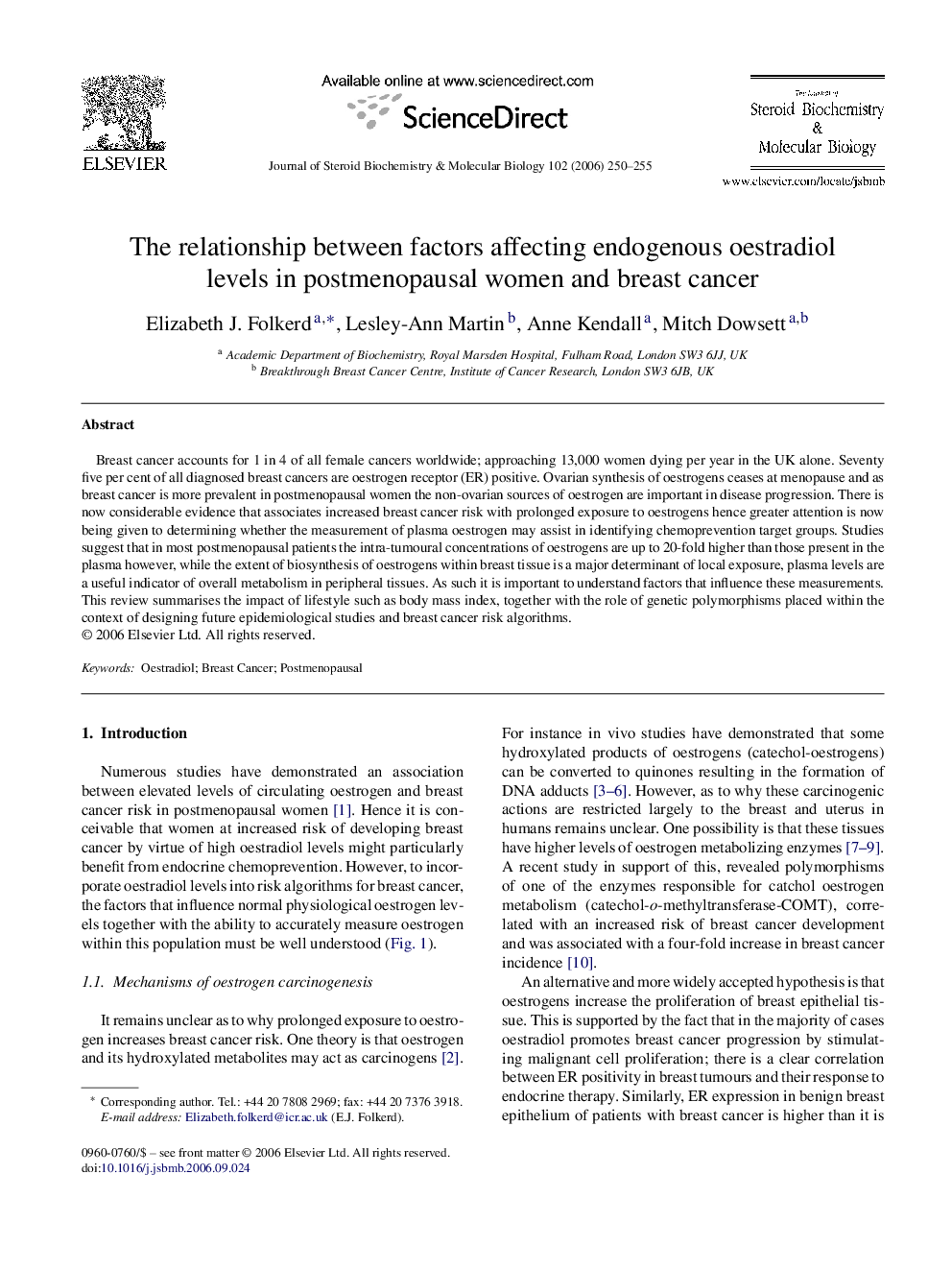| Article ID | Journal | Published Year | Pages | File Type |
|---|---|---|---|---|
| 1992764 | The Journal of Steroid Biochemistry and Molecular Biology | 2006 | 6 Pages |
Abstract
Breast cancer accounts for 1 in 4 of all female cancers worldwide; approaching 13,000 women dying per year in the UK alone. Seventy five per cent of all diagnosed breast cancers are oestrogen receptor (ER) positive. Ovarian synthesis of oestrogens ceases at menopause and as breast cancer is more prevalent in postmenopausal women the non-ovarian sources of oestrogen are important in disease progression. There is now considerable evidence that associates increased breast cancer risk with prolonged exposure to oestrogens hence greater attention is now being given to determining whether the measurement of plasma oestrogen may assist in identifying chemoprevention target groups. Studies suggest that in most postmenopausal patients the intra-tumoural concentrations of oestrogens are up to 20-fold higher than those present in the plasma however, while the extent of biosynthesis of oestrogens within breast tissue is a major determinant of local exposure, plasma levels are a useful indicator of overall metabolism in peripheral tissues. As such it is important to understand factors that influence these measurements. This review summarises the impact of lifestyle such as body mass index, together with the role of genetic polymorphisms placed within the context of designing future epidemiological studies and breast cancer risk algorithms.
Related Topics
Life Sciences
Biochemistry, Genetics and Molecular Biology
Biochemistry
Authors
Elizabeth J. Folkerd, Lesley-Ann Martin, Anne Kendall, Mitch Dowsett,
